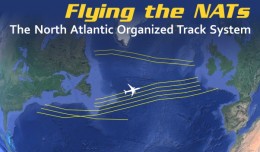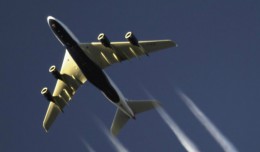If you spend any amount of time planespotting at an airport, sharing photos on the NYCAviation Photo Hangar, combing through #AvGeek hashtagged conversations on Twitter or doing any other similar aircraft-centric activity, you’ve likely heard hundreds of aviation terms thrown around. Some of the more commonplace terminology such as “low vis”, “livery”, “altitude” and “ATC” are easily recognizable and do not necessarily require a lengthy explanation.
However, because the community of aviation enthusiasts on and offline are comprised of a mix of everything from industry insiders, pilots, and flight attendants, to photographers, frequent flyers, drone operators, and novice modelers, it might be helpful to define the language that gets thrown about in social media conversations and threads happening among these individuals!
The goal of this article is not to define each and every aviation term, but to focus on some of the lesser known aeronautical phrases for the not-so-frequent flyer. The best part about this glossary of terms and acronyms is that its contents were crowdsourced by some of the best and brightest among the aviation geeks (avgeeks) on Twitter! Let’s take a look at a select few of them in this first installment of the Aviation Glossary.
- Abeam – Describes the positioning of an aircraft directly across from or over a navigation aid or runway.
- Alliance – An arrangement between a group of airlines agreeing to cooperate on a substantial level.
- AFFF – Aqueous Film-Forming Foam. The fire fighting foam used in aircraft emergencies.
- ARFF – Aircraft Rescue and Fire Fighting. This level of fire fighting is used in response/rescue of passengers and crew aboard or around aircraft, usually on airport grounds.
- ATIS – Automatic Terminal Information Service. A continuous broadcast of weather, active runways, and other important information like NOTAMs (see below). It is accessible by both radio broadcast and telephone.
- AOG – Aircraft On Ground. When an aircraft cannot depart on schedule because of a maintenance need.
- AWOS – an acronym for Automated Weather Observation System. It is an airport weather package that provides real-time reporting on airport weather conditions.
- Chop – defined as a rapid, bumpy movement of an aircraft with little to no change in its attitude or altitude.
- Codeshare –a marketing arrangement in which an airline places its designator code on a flight operated by another airline, and sells tickets for that flight.
- Crash Pad – an apartment or house, usually used by flight crews to layover in their home base. Crash pads are used by airline crew who maintain their primary residence away from the city in which they are based.
- Dead-Heading – the practice of carrying an airline’s own staff on a normal passenger trip so they may be positioned to begin or resume their flying duties.
- EDCT – Expected Departure Clearance Time. The runway release time assigned to an aircraft operating in traffic management programs. Aircraft are expected to depart no sooner than the EDCT and no later than 15 minutes after. Pronounced “edict.”
- EMAS – Engineered Materials Arresting System. A bed of engineered materials built at the end of a runway to reduce the severity of damage or personal injury should an aircraft overrun the end of the runway. Typically the material used are crushable concrete blocks.
- ETOPS – ExTended OPerationS, formerly Extended-Range Twin-engine Operational Performance Standards. References aircraft that are capable of flying over places where landing areas are sparse or non-existent, such as oceans or mountainous terrain. A double entendre for the term is Engines Turn Or Passengers Swim.
- Go Around – An aborted landing by an aircraft that is on final approach. Can be initiated by either the pilots or air traffic control.
- Interline – is a voluntary commercial agreement between individual airlines to handle passengers traveling on itineraries that require multiple flights on multiple airlines.
- Jettison –the procedure used to discard fuel or other payload items and is often employed during both civilian and military emergencies.
- Joint Venture – An agreement between 2 or more airlines governing flights between 2 regions. Joint ventures generally allow for airlines to split revenue regardless of who sells the tickets or operates the flights.
- LOPA – Layout Of Passenger Accomodations. An engineering diagram of the aircraft’s cabin interior that includes locations of passenger and flight attendant seats, emergency equipment, exits, lavatories, and galleys. Formally known by the FAA as the Aircraft Interior Configuration Document.
- METAR – METeorological Aerodrome Report. A weather report predominantly used by pilots, air traffic controllers and meteorologists, to assist in weather planning and operational decisions for a particular airport.
- Missed Approach – The procedure followed when an instrument approach cannot be completed to a full stop landing. The first step in executing a missed approach is to initiate a go around.
- MTOW – The Maximum TakeOff Weight of an aircraft as defined by the aircraft manufacturer.
- NOTAM – NOTice to AirMen. A notice filed with an aviation authority to alert aircraft pilots of potential hazards along a flight route or at an airport that could affect safety of flight.
- PAPI – Precision Approach Path Indicator lights are a key part of the airfield lighting system. This visual aid on the side of a runway aids pilots in maintaining the correct approach path angles once a runway is in sight following an instrument approach. It warns pilots of a too high or too low descent path.
- Positive Space – different from dead-heading, positive space is a term used for airline employees or vendors traveling on company business. They have a confirmed seat on the flight and the number is included in the booked totals for the flight.
- REIL – Runway End Identifier Lights. A pair of synchronized flashing lights, located laterally on each corner of the runway approach threshold, providing rapid and positive identification of the approach end of a runway.
- RON – Remain OverNight. Refers to when an aircraft or aircrew will be staying at a destination overnight.
- RTO – a Rejected or aborted TakeOff is a maneuver initiated by a pilot because the aircraft is exhibiting warnings or signs of an unsafe flight condition and the pilot intends to keep the aircraft on the ground
- Stopway – An area beyond the end of the runway that can be used for deceleration in the event of a rejected takeoff.
- SIDA – the Security Identification Display Area is a special security area designated by an airport operator in the US to comply with Transportation Security Administration (TSA) requirements.An appropriate identification badge is required to access these areas.
- Turbulence – Momentary, erratic changes in altitude or attitude.
Did you not see a term you were hoping to find included in the glossary? Don’t worry – contact us and we’ll get you a definition, or suggest the term be covered in the next installment of Speak Like An #AvGeek.
If you enjoyed the first installment of the glossary, check back regularly for future editions of the aeronautical terminology glossary.







